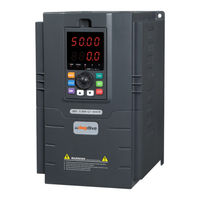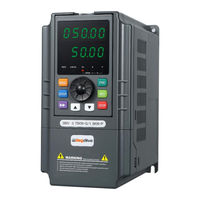
degdrive DGI900 Manuals
Manuals and User Guides for degdrive DGI900. We have 2 degdrive DGI900 manuals available for free PDF download: User Manual
degdrive DGI900 User Manual (252 pages)
Table of Contents
-
-
Disposal14
-
-
-
JOG Running47
-
PLC Running48
-
-
-
-
Preset Frequency123
-
Minimum129
-
G/P Type Display131
-
Stop Mode134
-
Coast to Stop134
-
Brake Use Ratio135
-
JOG Operation138
-
Reverse Control140
-
Drop Control141
-
Timing Function150
-
Timing Duration150
-
Wakeup Frequency152
-
RUN Pause156
-
PID Pause159
-
PLC Status Reset159
-
Emergency Stop161
-
X Filter Time163
-
X1-3 Delay Time169
-
AO1/2 Gain178
-
Torque Boost180
-
Encoder Type199
-
Fault Protection212
-
-
Set Length224
-
Actual Length224
-
Set Count Value225
-
-
-
Fault Reset236
-
-
RTU Protocol241
-
CRC Check247
-
Data Format250
-
Local Address250
-
Response Delay250
Advertisement
Advertisement

